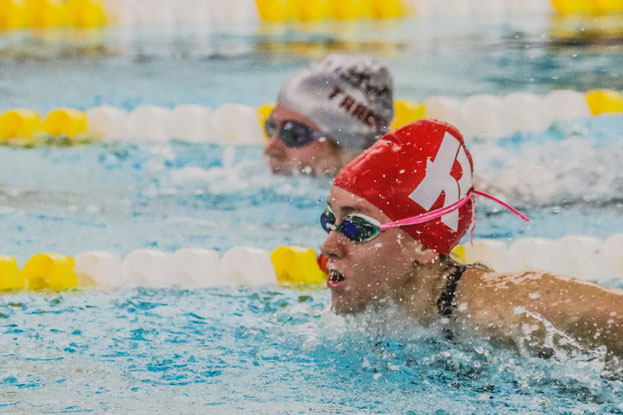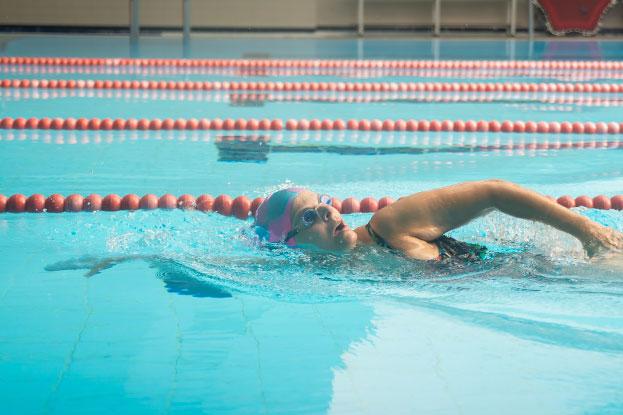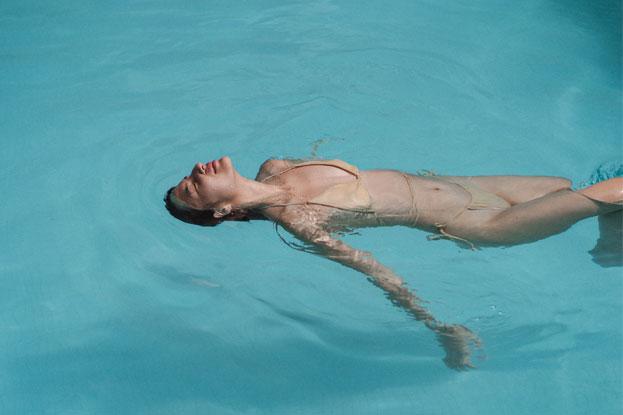Competitive swimming is an exhilarating sport that combines exceptional skill, technique, and strategy. The sight of swimmers gliding effortlessly through the water captures the essence of their mastery and the pursuit of maximum speed and efficiency. To excel in the pool, swimmers must understand and apply the principles of hydrodynamics, biomechanics, and physiology. In this article, we will explore the science behind competitive swimming techniques, unraveling the key factors that contribute to the swimmers’ remarkable speed and unrivaled efficiency in the water.

Biomechanics: Efficient Movement
Biomechanics focus on the application of mechanical principles to the human body’s movement. Understanding and applying the principles of biomechanics in swimming help swimmers to optimize their movements in the water, allowing them to generate maximum propulsion while minimizing energy expenditure. One key aspect of biomechanics in swimming is stroke technique optimization. Each swimming stroke – freestyle, backstroke, butterfly, and breaststroke – has specific biomechanical principles that swimmers must adhere to in order to maximize propulsion and minimize drag. For example, in freestyle and backstroke, maintaining a high elbow position during the pulling phase allows swimmers to increase the surface area of their hand and forearm in contact with the water, generating more propulsion per stroke. Similarly, in butterfly and breaststroke, understanding the optimal timing and coordination of the arm and leg movements is crucial to generate maximum power and maintain a streamlined body position.
The role of biomechanics extends to the kicking technique and propulsion generated by the legs. Effective kicking technique involves flexing the ankle and employing quick, precise movements to maximize the propulsive force. Understanding the biomechanical principles of the kick, such as the range of motion, timing, and coordination with the upper body, allows swimmers to generate more power and speed. Breathing technique is also essential for competitive swimmers. Coordinating the breath with the arm stroke helps maintain the body’s alignment and reduces drag. In freestyle for example, swimmers practice bilateral breathing (alternating sides) to maintain a symmetrical stroke and to prevent muscle imbalances.

Hydrodynamics: Minimizing Drag
Hydrodynamics explains fluid behavior and its effects on objects in motion. Various forces interact between the swimmer and the water to propel the swimmer through the water. By executing arm movements, the swimmer creates a thrust force that propels the body forward. Simultaneously, water molecules push back against the swimmer’s body, creating drag. This drag force hinders forward progress and requires the swimmer to exert more energy to maintain or increase their speed. Reducing drag is crucial in competitive swimming as it allows swimmers to move through the water with greater ease and speed.

One of the fundamental principles of hydrodynamics in swimming is maintaining a streamlined body position. Swimmers strive to minimize the surface area that comes into contact with the water, effectively reducing the drag force. This is accomplished by keeping the body as straight as possible in alignment with the direction of travel. To achieve optimal streamlining, swimmers aim to align their body in a straight and narrow position. They ensure that the head is in line with the spine, elongate the torso, and bring the legs and feet close together. Additionally, swimmers focus on horizontal alignment, tilting the body slightly downward to create a smoother pathway through the water. A streamlined body position allows swimmers to significantly reduce the resistance caused by water turbulence, moving through the water with minimal drag.
Physiology: Optimal Training and Recovery
Training and recovery are integral whether you’re just learning to swim or you’re into competitive swimming. Swimmers undergo rigorous training programs to build endurance, strength, and power while perfecting their strokes and optimizing efficiency. Periodization divides the training program into distinct periods or phases, each with specific objectives and training focuses. This helps to avoid plateauing, overtraining, and injury by balancing workload, recovery, and adaptation to ensure that swimmers are at their peak during competition seasons. Similarly, recovery is essential for swimmers to repair and rejuvenate their bodies after intense training sessions. Adequate rest, sleep, nutrition, hydration, and active recovery methods help swimmers recover from physical and mental fatigue, reduce muscle soreness and injury prevention. Proper recovery allows swimmers to maintain their training consistency, adapt to the demands of the sport, and achieve long-term success in competitive swimming.

Technology and Innovation
Technology has revolutionized competitive swimming, aiding athletes in refining their techniques and improving their performance. For example, underwater cameras and motion analysis software allow for detailed stroke analysis and technique improvement. Computational Fluid Dynamics (CFD) simulations are also used to study the interaction between the swimmer and the water, providing detailed information on drag forces, pressure distribution, and flow patterns. This enables swimmers and coaches to make informed decisions regarding technique modifications and equipment selection. Advances in textile technology have also led to the development of high-performance swimsuits, goggles and caps that are designed to reduce drag and enhance hydrodynamic efficiency. Moreover, wearable devices, such as swim watches and stroke monitors, provide real-time feedback on stroke count, pace, and efficiency. These devices help swimmers track their progress, identify weaknesses, and make data-driven training decisions.
Conclusion
Competitive swimming is a sport that combines skill, technique, and strategy, and its success is influenced by the understanding and application of scientific principles. Swimmers can leverage biomechanical principles and hydrodynamics to maximize efficiency in the water. Proper training and recovery, guided by periodization, are crucial for improving performance and preventing injuries. Technology provides tools and equipment for performance tracking and innovation. The integration of science and technology empowers swimmers to continuously refine their techniques, track progress, and make data-driven decisions, ultimately pushing the boundaries of performance in competitive swimming.
